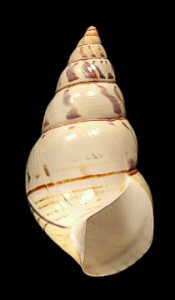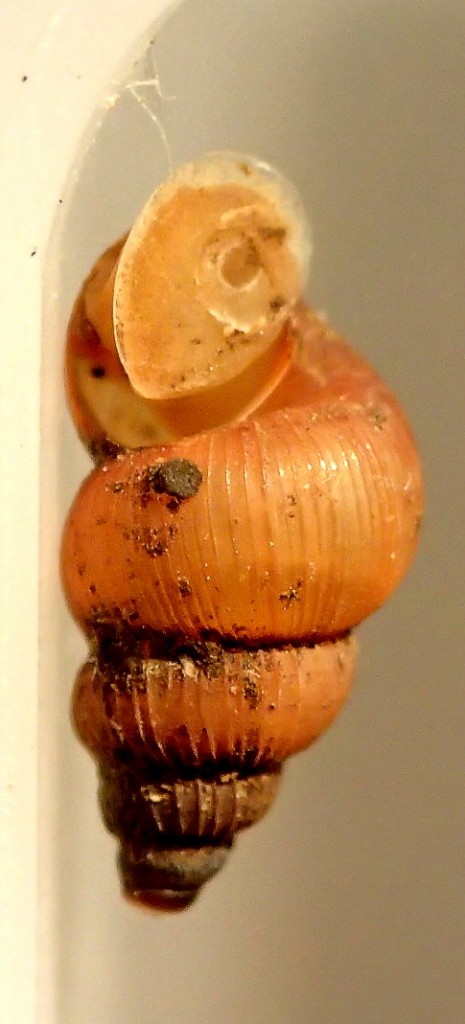Among the most beautiful snails are the Florida Tree Snails of the genus Liguus. Few groups of molluscs have such a storied past. Liguus, or Ligs, are arboreal snails occurring in southern Florida, Cuba, with a single species in western-most Haiti. The number of species involved depends on the people asked and the amount of beer consumed. Most people agree that Cuba, with an abundance of named species, was the ancestral home of the group. It was probably only a short hop for Guantánamo’s snails to the Haitian shore via hurricane-driven foliage. And many, including this writer, believe that Ligs were also the original Cuban refugees to Florida – rafted from Cuba to the Keys and the Gold Coast. And from there, all heck broke loose.
The situation is this: the snails live in hammocks, which are islands of trees surrounded by sawgrass and other soggy vegetation. To the tree-hugging snails this intervening area might as well be the ocean. They cannot, by themselves, get from Hammock A to Hammock B unless they are blown there on vegetation during hurricanes or perhaps rafted during floods. It is what happens next that is important. In all likelihood only a very few snails will make it to the next hammock. Should they survive and there are enough individuals to mate (they are hermaphrodites) or they are already pregnant, that next generation, now isolated, will have only a small fraction of the genetic variation of the original populations. The result is an enormous variety in shell coloration where specific patterns only occur in a single hammock or group of hammocks. Fifty-nine patterns have been named.
In Florida the Ligs occurred in three general areas: the Keys, the Gold Coast, and the Everglades. Collecting them, particularly in the Everglades, could be an adventure. And those adventurers called themselves Liggers. On foot, on horseback, in Model As, some of America’s most famous malacologists ventured into the chigger-infested, cotton-mouth crawling, gater guarded, sawgrass cutting landscape in the early 1900s. Long before GPS or even decent maps, these intrepid collectors produced hand-drawn maps and named and numbered hundreds of hammocks and cataloged the Ligs they found there. Archie Jones, perhaps the most experienced of the Liggers, once remarked that a Ligger needed two qualities: high stamina and low IQ.
These were not just shell collectors. They were conservationists. They quickly realized that many of the hammocks were being destroyed and others would inevitably be lost as well. The Keys were being cut-over for houses. The Gold Coast was being paved in concrete for posh hotels. The hammocks, and their unique snails, would soon be lost forever. But by 1957 snails were being transplanted out of harm’s way into the newly formed Everglades National Park where they would be protected. Most of the 59 “forms” still exist today but perhaps not in their original location. That’s where the Division of Molluscs comes into the picture.
We have one of the largest collections of Florida Liguus in the world, much of it purchased directly from Archie Jones. We were interested in zoogeographic patterns between the color forms. We used the powerful but complicated mapping software ArcIMS to plot the various distributions. But first we had to georeference the hundreds of Liguus hammocks – whose location you may remember was in the form of hand-drawn maps nearly a hundred years old. With the invaluable aid of several students we found and plotted the hammocks. Using a layer for each color form it was possible to compare distributions with each other and other environmental factors such as land type. The effort is available on line through our Division website. It is the first of its kind to map these snails (and the only one as far as I know). Go here and select “Maps:”
http://www.biosci.ohio-state.edu/~molluscs/OSUM2/
Besides being beautiful shells the Ligs beg several very interesting ecological and phylogenetic questions. The elephant in the malacological room is: “Are they all the same species, just local variations, the product of a single Cuban introduction?” I suspect not. My pet hypothesis, lacking any data whatsoever, is that our Floridian Ligs are the product of several introductions of several species. “Are they color forms, species, subspecies, or something else?” I suspect something else. I think this is a fantastic opportunity for some student to investigate this complicated problem using emerging phylogenetic methods.
As a parting word, the Olde Tyme Liggers were not averse to a little ad hoc experimentation. “I wonder what would happen if we took this snail from Hammock A and this snail from Hammock B and put them in a snail-less Hammock C? Whaddaya think?” Well, they form hybrid color patterns, all dutifully named after colleagues and wives.
About the Author: Dr. G. Thomas Watters is Curator of Molluscs at the Museum of Biological Diversity.






























